Jammu & Kashmir
Life and People
Notes
Kashmir Region
Kashmir is cuddled in North-Western folds of the Himalayas and is enclosed by tall and towering chains of mountains on all sides except for certain passes and a narrow gorge at Baramulla District. Kashmir is mainly drained by the Jhelum River and its various tributaries. River Jhelum originates from Verinag spring and flows in the Valley. It enters Wular Lake and leaves it near Sopore from where it flows through a narrow gorge across the Pir-Panjal from Baramulla to Muzaffarabad. The main tributaries feeding the Jehlum are Vishau, Rambiara, Bringi, Lidder, Arpal, Romshu, Nallah Sind. Pohru etc. The world famous lakes Dal, Anchar, Manasbal and Wular add beauity to Kashmir. The weather and the climatic conditions of Kashmir valley are entirely different from that of sub-tropical Jammu Plains and the arid conditions of Ladakh Plateau.
People
The main ethnic groups of Kashmir region are Kashmiris, Dards and Hanjis. About 94 per cent of the Kashmiri people are Muslims, the rest being mostly Hindus and Sikhs. Kashmiri Hindu Brahmins are popularly called Pandits. The Sikhs in Kashmir valley are mostly concentrated in Tral, Mattan, Karewa and Baramulla. The most widely spoken language is Kashmiri.Kashmiri’s use (Kangri)
and wear long gown “Pheran” to keep themselves warm in the winter. The staple food of Kashmiri people is rice. The favourite vegetable is karamsag.
Wazwan is the cuisine of Kashmiris known for its flavour and taste world over. The people of Kashmir are mainly engaged in agriculture, horticulture, dairy farming, tourism, apiculture and pisciculture. Bhand Pather, Chakri and Rauf are folk dances while as Sofiana and lightweight music also are a part of Kashmir Culture. As per the 2011 census, Kashmir Valley is inhabited by around 7 million people. Apart from scenic beauty, it offers variety of activities like golf, snowskiing, snow-skating, water-rafting, boating, fishing, hiking etc. To tourists. Furthermore, religious tourism plays an important role in the economy of the Valley of Kashmir. The holy shrines of Kashmir like Dargah Hazratbal, Peer Dastageer Sahib, Char-e-Sharief, Makhdoom Sahib, Amaranath Cave, Shankar Acharya, Khir-Bhawani etc attracts lakhs of pilgrims from the country and abroad. The main minerals found here are Gypsum, Limestone, Lignite Coal, and Granite. The river Jhelum has a great potential of generating hydroelectricity and many power projects like Uri -I, Uri -II, Kishanganga are already commissioned and are contributing in the economic development of the region.
Flora and Fauna
The region is dominated by evergreen coniferous forests
like Cidrus (Deodar), Pine (Kairu) and Fir (Budal). The Kashmir is rich in trees like Poplars, Willows, Kikar and Chinars. The other type of vegetation that is found in Kashmir Valley are the vast grassy expanses, called nais or margs. These margs are alpine meadows, where birch and junipers are common. The famous margs of Kashmir are Gulmarg,Yusmarg, Sonamarg and Tangmarg. These meadows are mostly utilised by the Bakerwals, who graze their livestock during summers when they migrate from the Jammu Plains and Pir Panjal. In Kashmir variety of flowers ranging from Lily, Tulip, Roses and Saffron are grown. Aromatic and Medicinal herbs such as Rosemary, Belladona and Lavender is also grow.
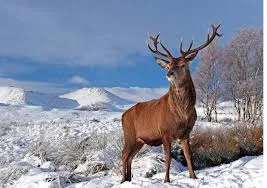 |
Agriculture
The important temperate fruits that are raised in Kashmir include apple,
peaches, pear, plums, cherries, apricot, strawberries, saffron, almond, walnut and banafisha. Kashmir also produces many cereal crops like rice, corn and wheat. Pulses and vegetable are also grown here.
Saffron is the cash crop and is grown in the Karewas of Kashmir Valley.
Jammu Region
This region comprises of the plains, hills and mountains. The sub-tropical Jammu experiences temperate type of climate. The Jammu region is drained by various rivers like Chenab, Ravi, Tawi, Ujh, Basantar and their tributaries. The Jammu plains are often called as an extension of Punjab plains. Locally, they are also known by the name of Anderwah and Bajwat.
These plains are flood plains of Tawi River, Chenab, Basantar, Ujh and Ravi. The Shiwaliks are another important physical division of Jammu region consisting of a long chain of narrow and low hills (dhars) combined with broad valleys (duns). The mountain passes here are usually mentioned as Gali or Gala and used for socio-economic purposes. Some important passes are Samat Gali, Dang Gali, Pathri Gali and Kalun Gala. The foot hills of Shiwaliks have sub-tropical climate. During the summer period (May and June) hot wind locally called as Loo blows. The night temperature decreases due to wind descending from Shiwaliks called as Dadu. The monsoon brings abundant rainfall in the month of July and August. The Jammu region is having abundant natural resource base which includes timber, other forest products, medicinal herbs and large agricultural tracks. Furthermore, Coal, Gypsum, China Clay, and Limestone are important mineral resources of Jammu region.The Chenab Valley of Jammu region has tremendous potential for development of varied hydroelectricity power projects like Baglihar, Dool Hasti, Salal which have already been commissioned and are contributing to the economy of the Union Territory of Jammu and Kashmir. The Jammu region has a great potential for tourism. The famous lakes of Mansar and Surinsar, Shri Mata Vaishno Devi Shrine, Raghunath Temple, Bagh-e-Bahu , Akhnoor fort, JiaPota, Dera Banda Bahadur, Shahadra Sharief Shrine, Shiv khori, Amar Mahal Palace and Dogra Art Gallery are popular tourist destinations.
People
The main inhabitants of Jammu region are Dogras, Paharis, Bhaderwahi, Siraji, Kishtwari, Pogali, Paddari, Gaddis and Gujjars. Majority of the Dogras are Hindus. Most of the people practise agriculture. Dogri is that the main language spoken by the people of Jammu. The staple food of people is wheat. Kud, Heren, fumenie and Jagarana, Bakh, Gwatri, Karak, Benthe are some of the important music and folk dances of Jammu region. As per census 2011, the Jammu region is inhabited by 5.3 million people.
Flora and Fauna
Dry Savanna, scrubs and Sub-Tropical forests are the main vegetation of the Jammu region. The dry savanna and scrub are confined to the Jammu plains and Kandi areas. The main species of trees are Kikar, Ber, Shishum, Peepal, Banyan, Mango, Palm and Bamboo. Chir is the main tree of these forests. The tree may be a valuable source of timber and resin.
In Jammu region, animals like Cheetah, wild bull, Bengal monkey, Langur, wild sheep, bear marmot, Wild boars, musk shrew, musk rat, water shrew, squirrel, rats and mice constitute the mammalian fauna. Many types of snakes, lizards and frogs constitute the reptilian and amphibian fauna. Among the commonly found birds of Jammu region are chukor in rocky and bushy slopes, snow patridge, kikla, cheer pheasants, jungle peacock, cuckoos, pigeons and sand goose. Among the larger birds, there are vultures, falcons, eagles, wool owls, wood peckers etc.Agriculture
Agriculture in the region is mainly of subsistence type wherein wheat, maize, and rice are dominant cereal crops. The subtropical-fruits are confined to Jammu plains and Jammu hills. These include orange, lemon, litchi, fig, guava, pomegranate, grapes and mangoes.





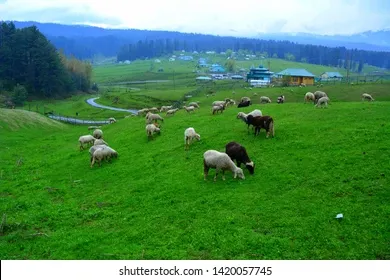
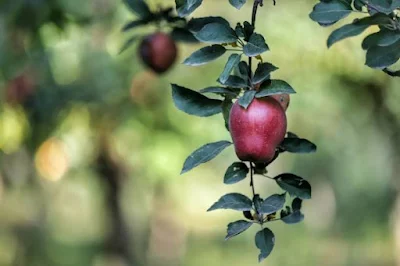

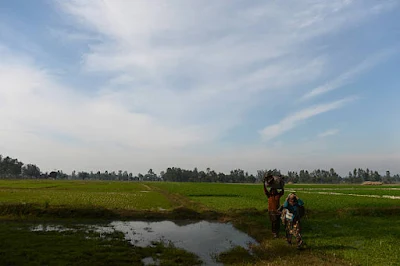
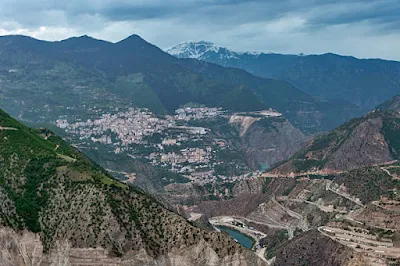


If you have any doubt, suggestion or question, feel free to contact us.